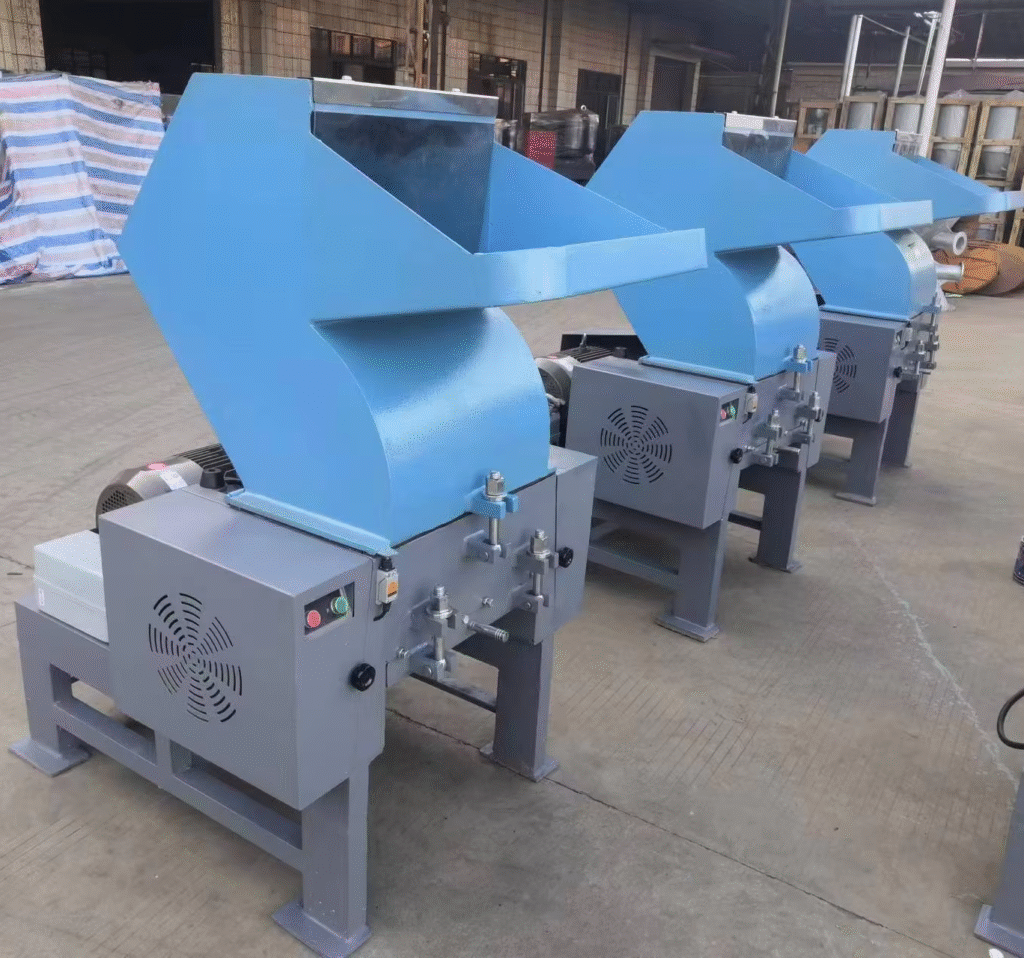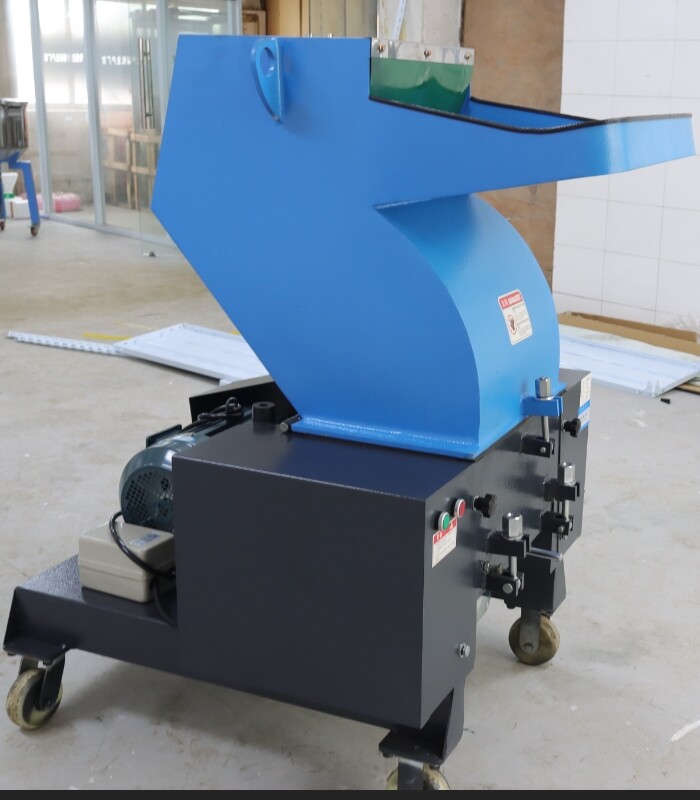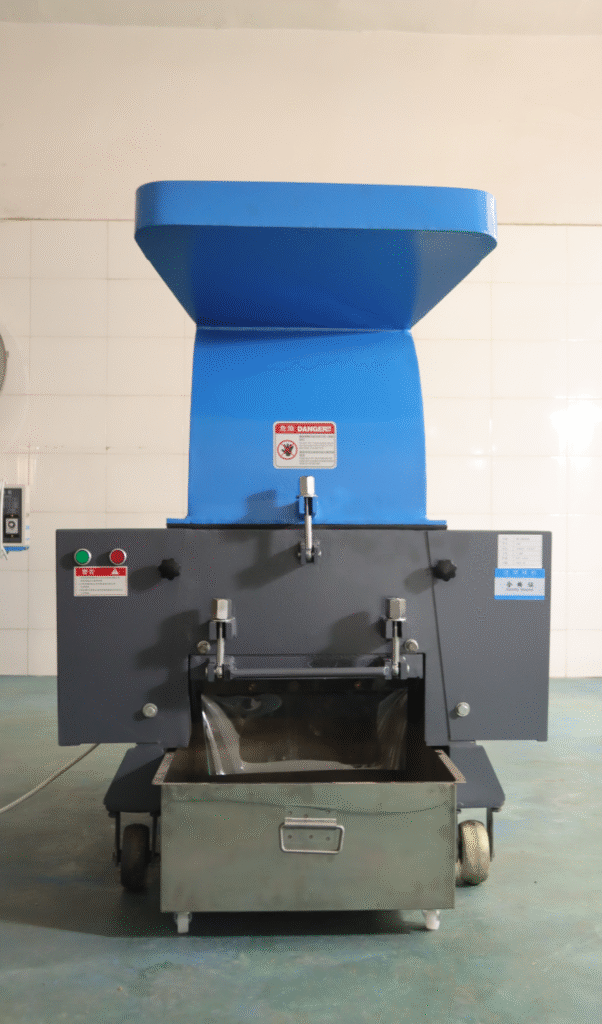Introduction
In today’s rapidly industrializing world, managing waste has become a global challenge. From construction debris and scrap metals to discarded plastics and wood, industries are producing vast amounts of waste materials every day. Traditional disposal methods, such as landfilling and incineration, are no longer sustainable due to environmental concerns and rising costs. This is where powerful crushers come into play. These machines are not just about breaking down large, bulky waste into smaller pieces—they are reshaping the way industries recycle, reuse, and recover resources.
This article explores the rise of powerful crushers, their role in transforming industrial waste into valuable resources, their working principles, major applications, benefits, and how they are shaping the future of sustainable recycling.
What Are Powerful Crushers?

Powerful crushers are heavy-duty machines designed to reduce the size of large, tough, and often irregular industrial waste materials. Unlike standard shredders, these machines are built to handle high volumes, tough materials, and continuous operations. They come in various forms, such as jaw crushers, cone crushers, impact crushers, and industrial shredders, each suited for specific applications.
Key characteristics of powerful crushers include:
High crushing force: Capable of breaking down dense and rigid materials like metal, concrete, and thick plastics.
Durability: Built with robust frames, wear-resistant parts, and heavy-duty motors.
Versatility: Suitable for multiple types of waste—metal, wood, plastic, rubber, and even electronic waste.
Efficiency: Continuous operation with minimal downtime.
In short, powerful crushers are not just machines—they are the backbone of modern recycling and resource recovery systems.
Why Are Powerful Crushers Important?

The importance of powerful crushers can be summarized in three major aspects:
- Waste Volume Reduction
Large industrial waste takes up enormous storage and transport space. Crushers dramatically reduce the size of waste, cutting logistics costs and making handling more efficient.
- Resource Recovery
By crushing waste into manageable sizes, industries can separate, process, and recover valuable materials such as metals, plastics, and aggregates. This aligns with the principles of the circular economy.
- Environmental Sustainability
Using crushers reduces the amount of waste going into landfills or incineration plants, lowering pollution and carbon emissions. Recycling crushed materials also reduces the need for raw resource extraction.
How Do Powerful Crushers Work?

While the working mechanism varies depending on the type of crusher, the general principle remains the same: apply high force or impact to break down material into smaller, uniform pieces.
Common Crushing Technologies:
Jaw Crushers: Use compressive force with two jaws (one fixed, one moving) to crush large blocks of material.
Cone Crushers: Apply pressure in a conical space, ideal for crushing aggregates and minerals.
Impact Crushers: Use high-speed impact to shatter brittle materials like concrete or stone.
Double-Shaft Industrial Shredders: Employ slow-speed, high-torque rotors with blades to shear and tear through waste like plastics, wood, and scrap metal.
Each type is engineered to handle specific waste streams, ensuring that no matter the material, there is a powerful crusher suited to the task.
Major Applications of Powerful Crushers
Powerful crushers are widely used across industries to process and recycle waste. Here are some of their key applications:
- Metal Recycling
Crushing scrap steel, aluminum, and copper into smaller pieces for easy smelting.
Recovering valuable ferrous and non-ferrous metals from industrial waste.
- Construction and Demolition Waste
Breaking down concrete blocks, bricks, asphalt, and stones into reusable aggregates.
Reducing bulky debris for easier disposal and recycling.
- Plastic Waste Recycling
Crushing plastic drums, pipes, and packaging materials.
Preparing plastics for re-pelletizing and manufacturing new products.
- Wood and Biomass Processing
Shredding wood pallets, furniture, and green waste into chips.
Preparing biomass fuel for energy generation.
- E-Waste Recycling
Crushing discarded electronics to recover metals and plastics.
Facilitating safe disposal of hazardous components.
- Rubber and Tire Recycling
Breaking down old tires and rubber products into granules.
Producing raw material for rubberized asphalt and other products.
These applications demonstrate how powerful crushers serve as a bridge between waste and resource recovery.
Benefits of Using Powerful Crushers
Industries that adopt powerful crushers gain a wide range of benefits, including:
- Cost Savings
Reduced transportation and storage expenses due to smaller waste volumes.
Lower disposal costs compared to traditional landfill dumping.
- Increased Recycling Rates
Enhanced ability to recover valuable materials for resale or reuse.
Boosts profitability by turning waste into revenue streams.
- Operational Efficiency
Continuous, automated crushing ensures higher productivity.
Less manual labor is required for waste handling.
- Environmental Impact
Supports circular economy practices.
Reduces pollution and conserves natural resources.
- Versatility and Scalability
Suitable for small-scale recycling plants and large industrial operations.
Customizable to meet specific industry needs.
Technological Advancements in Crushers
Modern powerful crushers are evolving with technological innovations that make them smarter, more efficient, and environmentally friendly.
Automation & AI Integration: Crushers equipped with sensors and AI can adjust crushing force, monitor wear, and optimize energy consumption.
Energy-Efficient Motors: New designs reduce power usage without compromising performance.
Dust and Noise Control: Built-in systems minimize workplace pollution and improve operator safety.
Modular Designs: Easy to upgrade or expand capacity as demand grows.
These advancements are pushing crushers from being simple machines to intelligent systems that integrate seamlessly with recycling lines.
Case Example: Crushers in Metal Recycling
Consider a steel recycling facility that receives tons of bulky scrap metal daily. Without crushers, storing and transporting this scrap would be inefficient and costly. By implementing a double-shaft powerful crusher, the facility reduces scrap volume by up to 70%, allowing for efficient smelting and recovery. The result? Lower operational costs, higher recovery rates, and increased revenue.
This is just one of many real-world examples where powerful crushers prove their value.
The Future of Powerful Crushers
As global demand for recycling and resource recovery grows, powerful crushers will play an increasingly important role. Future developments may include:
Smart Recycling Plants: Fully automated facilities where crushers work with AI-powered sorting systems.
Green Energy Integration: Crushers powered by renewable energy sources.
On-Site Crushing Solutions: Mobile crushers designed for flexible operations at demolition or mining sites.
In the near future, powerful crushers will not just process waste—they will drive innovation in sustainable industries worldwide.
Conclusion
The rise of powerful crushers marks a turning point in industrial waste management. No longer just machines for size reduction, they are now vital tools for recycling, sustainability, and resource recovery. From metals and plastics to wood and e-waste, powerful crushers are transforming industrial waste into valuable resources that fuel the circular economy.
By adopting advanced crushing technology, industries not only cut costs but also contribute to a cleaner, greener planet. As technology continues to evolve, the role of powerful crushers in shaping a sustainable future will only become more significant.
